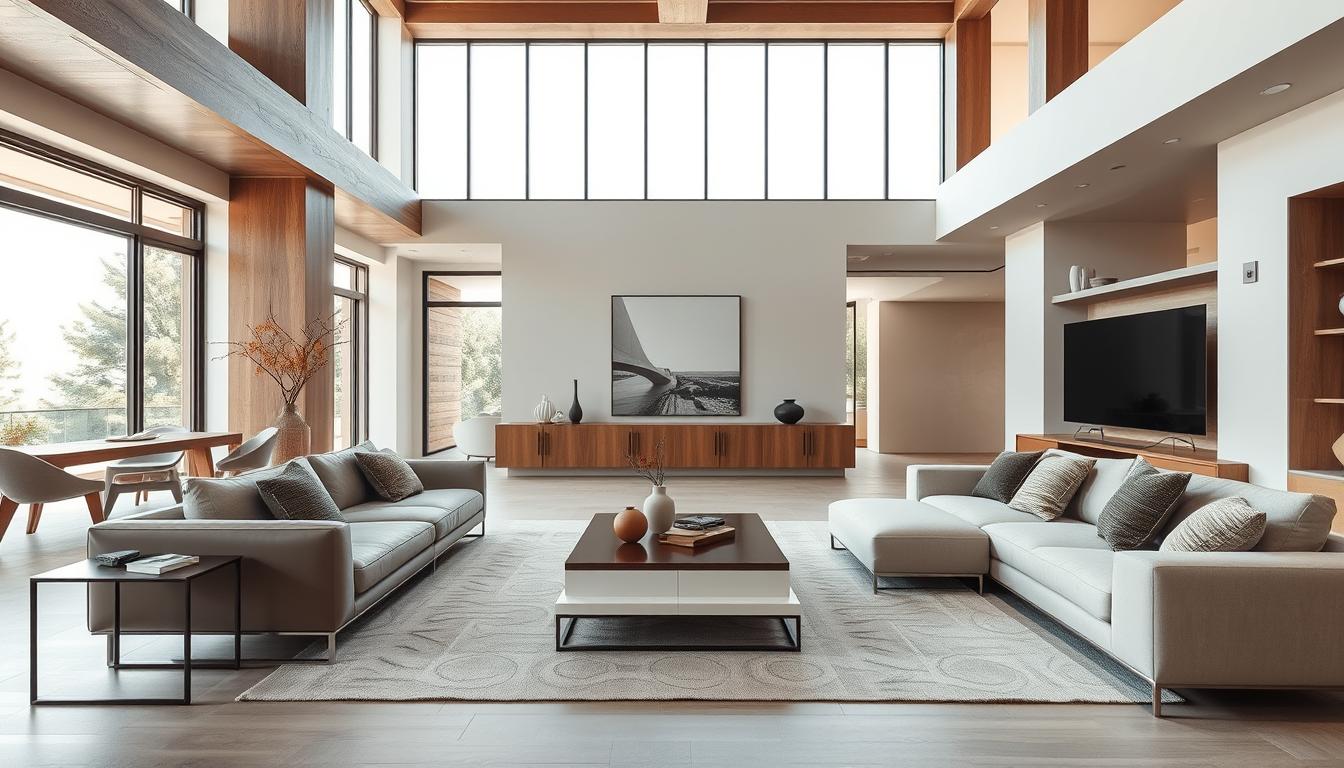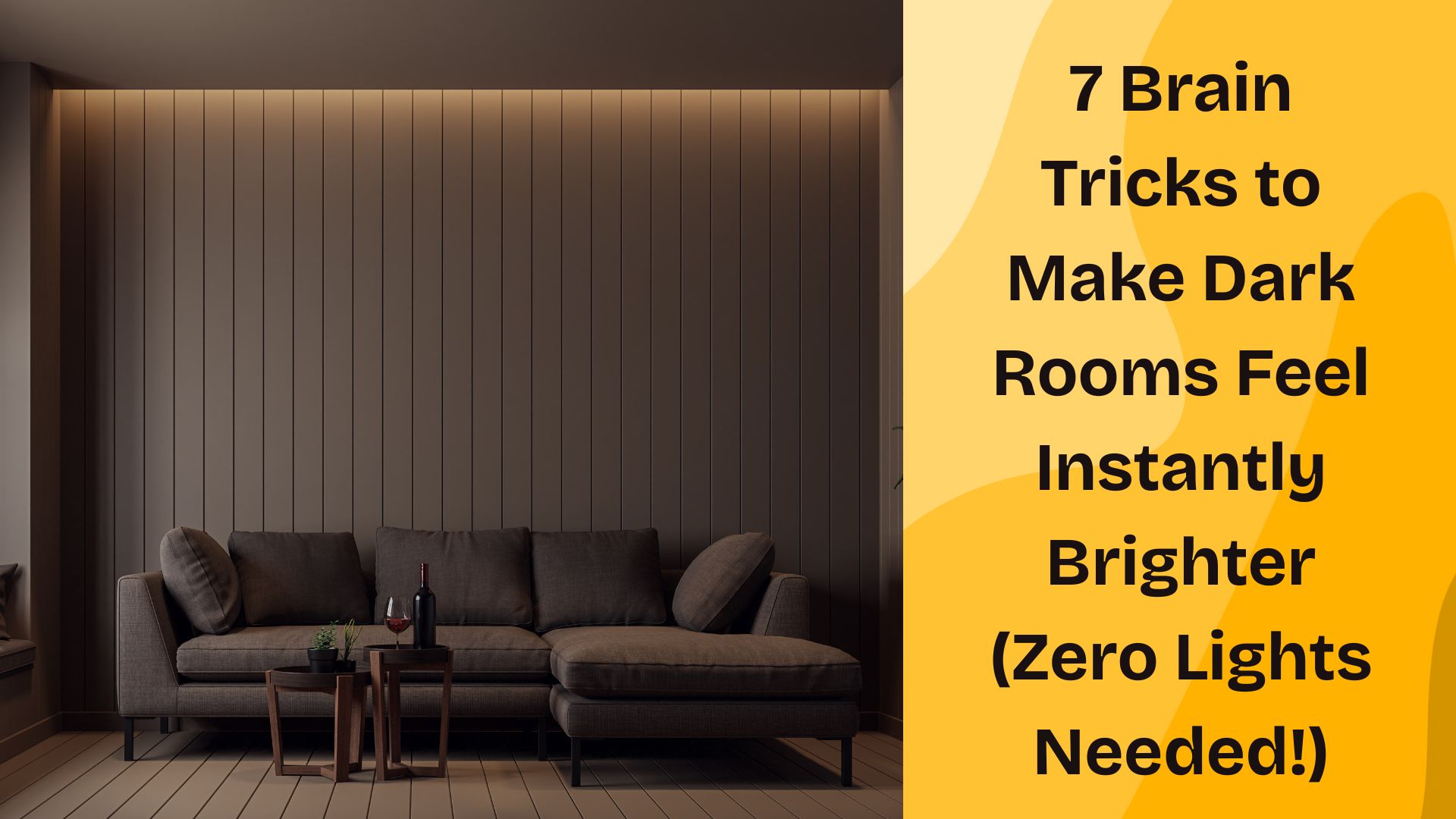Interior Design Tips: Expert Advice & Pro Tricks
Creating a beautiful and functional living space is a top priority for many homeowners. With the right home decor ideas, you can turn your house into a haven that reflects your personality and style.

Whether you’re looking to refresh a single room or undertake a full-scale renovation, seeking expert advice can make all the difference. In this article, we’ll share valuable insights and pro decor tricks to help you achieve your interior design goals.
Key Takeaways
- Understand the importance of interior design in enhancing your living space
- Discover expert tips for creating a functional and beautiful home
- Learn how to apply pro decor tricks to refresh your space
- Get insights into the latest home decor trends and ideas
- Find out how to balance style and functionality in your interior design
Understanding Design Fundamentals
The foundation of great interior design lies in understanding its core principles. A well-designed home is not just about aesthetics; it’s also about creating a functional and comfortable living space.
The Importance of Balance and Proportion
Balance and proportion are crucial elements in interior design. Balance refers to the distribution of visual weight within a room, achieved through the use of color, texture, and furniture. Proportion, on the other hand, relates to the size and scale of furniture and decor in relation to the room and each other. Ensuring that these elements are in harmony creates a sense of calm and visual appeal.
Color Theory Basics for Home Design
Color theory is a fundamental aspect of interior design, influencing the mood and ambiance of a space. Understanding the color wheel and how different colors interact is key to creating a harmonious palette. Warm colors like red and orange can stimulate, while cool colors like blue and green can calm. Neutral colors provide a versatile background that can be accented with bolder hues.interior design tips for living room
Creating Visual Rhythm in Your Spaces
Visual rhythm refers to the repetition or alternation of elements to create a sense of movement or pattern in a room. This can be achieved through the use of patterns on fabrics, rugs, and wallpaper, or by arranging furniture and decor in a way that guides the eye through the space. Creating visual rhythm adds energy and interest to a room, making it more engaging.
Interior Design Tips from Professional Designers
Professional interior designers often stress the importance of planning before making any purchasing decisions for your home. A well-planned space not only looks great but also functions efficiently, making your daily life easier.
Planning Your Space Before Purchasing
Before buying furniture or decor, it’s crucial to measure your space accurately and consider the flow of traffic. Creating a floor plan can help visualize how different pieces will fit together. Think about the purpose of each room and how you want to feel in that space.
For instance, if you’re designing a home office, consider the placement of your desk in relation to natural light and storage needs. A thoughtful plan ensures that your space is both beautiful and functional.
Selecting a Cohesive Color Palette
Choosing a color palette can be overwhelming, but starting with a single color you love can simplify the process. Consider the mood you want to create and the natural lighting in your space. Designers often recommend selecting a few core colors and then varying shades of those colors to add depth.
- Start with a neutral base
- Add one or two statement colors
- Use different shades to create dimension
Layering Textures for Dimension
Layering different textures can add visual interest and depth to your space. Mixing materials like wood, metal, and fabric can create a rich, layered look. For example, combining a smooth leather sofa with a chunky woven rug and wooden accents can add complexity to a room.
| Texture Type | Examples |
|---|---|
| Soft | Couch, pillows, blankets |
| Hard | Wood furniture, metal decor |
| Natural | Woven baskets, jute rugs |
Maximizing Small Spaces
Living in a small space doesn’t mean sacrificing style or functionality. With the right strategies, you can create a beautiful and efficient living area that meets your needs.
Multi-functional Furniture Solutions
Using multi-functional furniture is a key strategy for maximizing small spaces. Pieces like a storage ottoman or a desk with built-in shelving can serve multiple purposes, reducing clutter and increasing functionality.
For example, a sofa bed can be used as both a seating area and a guest bed, making it perfect for small apartments or studio spaces.
Strategic Mirror Placement
Mirror placement can significantly impact the perceived size of a room. By placing mirrors opposite windows, you can reflect natural light and create the illusion of a larger space.
Additionally, a large mirror above a fireplace or sofa can add depth and create a focal point in the room.
Vertical Storage Options
Maximizing vertical storage is crucial in small spaces. Using wall-mounted shelves, storage units, or hanging organizers can keep floors and surfaces clear, making the room feel more spacious.
For instance, installing floating shelves or a pegboard can provide ample storage for books, kitchen utensils, or office supplies, keeping them organized and out of the way.
Living Room Design Strategies
Designing a living room that is both functional and aesthetically pleasing requires careful consideration of several key elements. A well-designed living room can serve as the heart of a home, providing a space for relaxation, entertainment, and making memories.
Furniture Arrangement for Conversation
Arranging furniture to facilitate conversation is crucial. Placing seating in a circular formation or facing each other can encourage interaction. Consider the traffic path through the room and leave enough space between pieces for easy movement.
Creating a Focal Point
A focal point in the living room can be a statement piece, such as a fireplace, a large piece of art, or a stunning view. Arrange furniture around this feature to draw attention to it, creating a sense of balance and harmony in the room.
Accessorizing Without Clutter
Accessories can add personality to a room, but over-accessorizing can lead to clutter. Select a few meaningful or decorative items that complement the room’s design and place them thoughtfully. Rotate accessories seasonally to keep the space fresh.
| Design Element | Purpose | Tips |
|---|---|---|
| Furniture Arrangement | Facilitates conversation and movement | Use circular or facing seating arrangements |
| Focal Point | Creates visual interest | Use a statement piece like a fireplace or art |
| Accessorizing | Adds personality | Select a few meaningful items, rotate seasonally |
Bedroom Transformation Techniques
Creating a bedroom that exudes tranquility and comfort involves more than just picking the right furniture. It’s about crafting a space that promotes relaxation and rejuvenation.
Selecting the Right Bed and Positioning
Choosing the right bed is crucial for a good night’s sleep. Consider factors like mattress firmness, bed size, and style to ensure it complements your bedroom’s décor.
- Measure your bedroom space to determine the ideal bed size.
- Position your bed away from direct sunlight and drafts.
- Consider a bed frame that adds to the room’s aesthetic.
Lighting for Relaxation and Function
Effective lighting can make or break the ambiance of your bedroom. Layer different light sources to achieve a balance between functionality and relaxation.
Tips for bedroom lighting:
- Use dimmable lights to adjust the mood.
- Install bedside lamps for reading.
- Consider ambient lighting to create a relaxing atmosphere.
Personal Touches That Make a Difference
Adding personal touches can transform your bedroom into a true sanctuary. Incorporate elements that reflect your personality and style.
“The little things that make a house a home are the personal touches that bring warmth and character to a space.”
- Display personal items like photos or artwork.
- Incorporate textiles like throw blankets or rugs.
- Add plants for a touch of greenery.
Kitchen and Dining Area Enhancements
A well-designed kitchen and dining area can become the heart of your home, where memories are made and meals are enjoyed. Enhancing these spaces involves a combination of functional improvements and aesthetic updates.
Optimizing Kitchen Workflow
Optimizing your kitchen’s workflow is crucial for efficiency. This can be achieved by implementing the “work triangle” concept, where the sink, stove, and refrigerator form a triangular layout to minimize walking distances. Smart storage solutions, such as pull-out shelves and pot racks, can also enhance functionality.
Updating Cabinets and Hardware
Updating your kitchen cabinets and hardware can significantly refresh the space. Consider replacing outdated hardware with modern knobs or handles, or refacing your cabinets for a budget-friendly update. Soft-close drawers and custom cabinet organizers can add both style and functionality.

Creating an Inviting Dining Space
Creating an inviting dining space involves more than just the furniture. Consider the lighting, with options like a stylish chandelier or pendant lights. A statement piece, such as a bold art piece or a vibrant rug, can also add character to the dining area.
| Dining Area Element | Design Tip |
|---|---|
| Lighting | Use pendant lights or a chandelier to create ambiance. |
| Rug | Choose a rug that complements the dining table and chairs. |
| Artwork | Hang a statement piece or a collection of art to add personality. |
Bathroom Redesign on Any Budget
Transforming your bathroom can be done affordably with the right strategies. A bathroom redesign doesn’t have to be expensive to be effective. With a few simple changes, you can achieve a fresh new look without breaking the bank.
Small Changes with Big Impact
Making small changes can significantly impact your bathroom’s overall appearance. Consider updating your bathroom’s accessories, such as towels, rugs, and soap dispensers, to give it a cohesive look. You can also refresh your bathroom’s paint or add a new mirror to create a brighter atmosphere. These budget-friendly updates can make a big difference.
Storage Solutions for Tight Spaces
Effective storage solutions are crucial in bathrooms, especially in smaller spaces. Consider installing shelves, cabinets, or a storage unit above the toilet to maximize vertical space. You can also use baskets, bins, or drawers to keep essentials organized and within reach. By optimizing your bathroom’s storage, you can create a more functional and clutter-free space.
Lighting and Fixture Updates
Lighting updates can dramatically change the ambiance of your bathroom. Consider replacing existing fixtures with new ones or adding LED strips under cabinets for a modern touch. Updating your bathroom’s lighting can not only enhance its aesthetic but also improve its functionality. Additionally, consider replacing old faucets or showerheads to complete the look.
Current Interior Design Trends and How to Incorporate Them
This year’s interior design trends are making a statement with a focus on bringing the outdoors in, embracing smart technology, and celebrating individuality through mixed styles. As homeowners look to refresh their living spaces, incorporating these trends can breathe new life into their homes.

Biophilic Design Elements
Biophilic design is all about reconnecting with nature. Incorporating elements like living walls, natural materials, and an abundance of indoor plants can enhance well-being and create a calming atmosphere. To implement biophilic design, consider using reclaimed wood, stone, and plants native to your region.
Mixing Modern and Vintage Pieces
Blending modern and vintage pieces adds character and depth to a room. Start by pairing a sleek, modern sofa with a vintage armchair or coffee table. This mix-and-match approach not only creates visual interest but also tells a story, making your space truly unique. Don’t be afraid to experiment with different styles and eras to find a look that reflects your personality.
Smart Home Integration in Design
Smart home technology is revolutionizing the way we live. From voice-controlled lighting to thermostats that learn your preferences, integrating smart devices can enhance convenience and efficiency. When designing your space, consider how you can seamlessly incorporate technology, such as hiding wires and choosing devices that fit your aesthetic.
By embracing these trends, you can create a home that is not only stylish but also functional and connected to your needs and the environment.
Working with Professional Interior Designers
Collaborating with a professional interior designer can be a game-changer for homeowners looking to elevate their living spaces. With their expertise, designers can help you achieve a harmonious and functional home environment that reflects your personal style.
When to Hire a Designer
Knowing when to hire a professional interior designer can be crucial. Consider hiring a designer if you’re undertaking a major renovation, moving into a new home, or simply looking to refresh your current living space. Designers can offer valuable insights and solutions, especially when dealing with challenging spaces or specific design preferences.
What to Expect from the Design Process
The design process typically begins with an initial consultation to understand your needs, preferences, and budget. Following this, the designer will present a design concept, including a space plan, color palette, and material selections. Throughout the project, your designer will manage the process, ensuring that the final result meets your expectations.
“A good designer can turn your vision into a reality, making your home both beautiful and functional.”
—Kelly Wearstler, Interior Designer
Designer-Client Communication Tips
Effective communication is key to a successful design project. To ensure a smooth process, be clear about your expectations, budget, and timeline from the outset. Regular updates and open dialogue with your designer will help to avoid misunderstandings and ensure that the final design meets your needs.
- Clearly define your project goals and budget.
- Be open to your designer’s professional advice and suggestions.
- Establish a regular communication schedule.
By following these guidelines and working closely with a professional interior designer, you can achieve a beautifully designed home that enhances your quality of life.
Conclusion: Bringing Your Design Vision to Life
By now, you’ve gained valuable insights into the world of interior design, from understanding design fundamentals to working with professional interior designers. The key to bringing your design vision to life lies in applying these interior design tips and expert advice to create spaces that are both beautiful and functional.
As you’ve learned, achieving a well-designed home involves considering factors such as balance, color theory, and texture layering. Whether you’re maximizing small spaces, transforming your living room, or redesigning your bathroom, the principles remain the same: plan carefully, select a cohesive color palette, and don’t be afraid to add personal touches.
With the wealth of information available on design vision and interior design best practices, you’re now equipped to tackle your design projects with confidence. Remember, the goal is to create a space that reflects your personality and meets your needs.
By integrating the expert advice and interior design tips shared by professionals, you can turn your design vision into a reality, creating a home that’s both stylish and functional.
FAQ
What are the key elements of good interior design?
Good interior design is based on balance, proportion, and color theory. Understanding these fundamentals is crucial for creating a harmonious and functional space.
How can I maximize a small living room?
To maximize a small living room, consider using multi-functional furniture, placing mirrors strategically, and utilizing vertical storage options to create the illusion of more space.
What is biophilic design, and how can I incorporate it into my home?
Biophilic design involves incorporating elements of nature into your home, such as plants, natural materials, and plenty of natural light. This can be achieved by adding greenery, using natural textures, and maximizing window space.
How do I choose a cohesive color palette for my home?
To choose a cohesive color palette, consider the overall style and mood you want to achieve, and select colors that complement each other. You can also draw inspiration from nature, art, or design trends.
What are some effective ways to add depth and dimension to a room?
Layering textures, using a mix of modern and vintage pieces, and incorporating statement lighting fixtures are all effective ways to add depth and dimension to a room.
When should I consider hiring a professional interior designer?
Consider hiring a professional interior designer if you’re undertaking a major renovation, need expert advice on spatial planning, or want to ensure your design vision is executed effectively.
How can I create a relaxing and functional bedroom?
To create a relaxing and functional bedroom, focus on selecting the right bed, using effective lighting, and adding personal touches that promote relaxation and serenity.
What are some budget-friendly ways to update my bathroom?
Update your bathroom on a budget by making small changes, such as replacing lighting fixtures, updating hardware, and incorporating storage solutions to maximize space.
How can I optimize my kitchen workflow?
Optimize your kitchen workflow by streamlining your layout, updating your cabinets and hardware, and incorporating efficient storage solutions to minimize clutter.
What are the benefits of incorporating smart home technology into my design?
Incorporating smart home technology can enhance the functionality and convenience of your space, allowing you to control lighting, temperature, and security systems remotely, and creating a more modern and sophisticated living environment.



